Scarred for life: The rise of glassing, the most sickening act of drunken violence, and what can be done about it
Glassing is perhaps the most sickening act of drunken street violence, its effects indiscriminate, ugly, life-changing. Unlike say punching or stabbing, permanent disfigurement is not an unintended consequence: it is the point. And it’s on the rise. Godfrey Holmes investigates
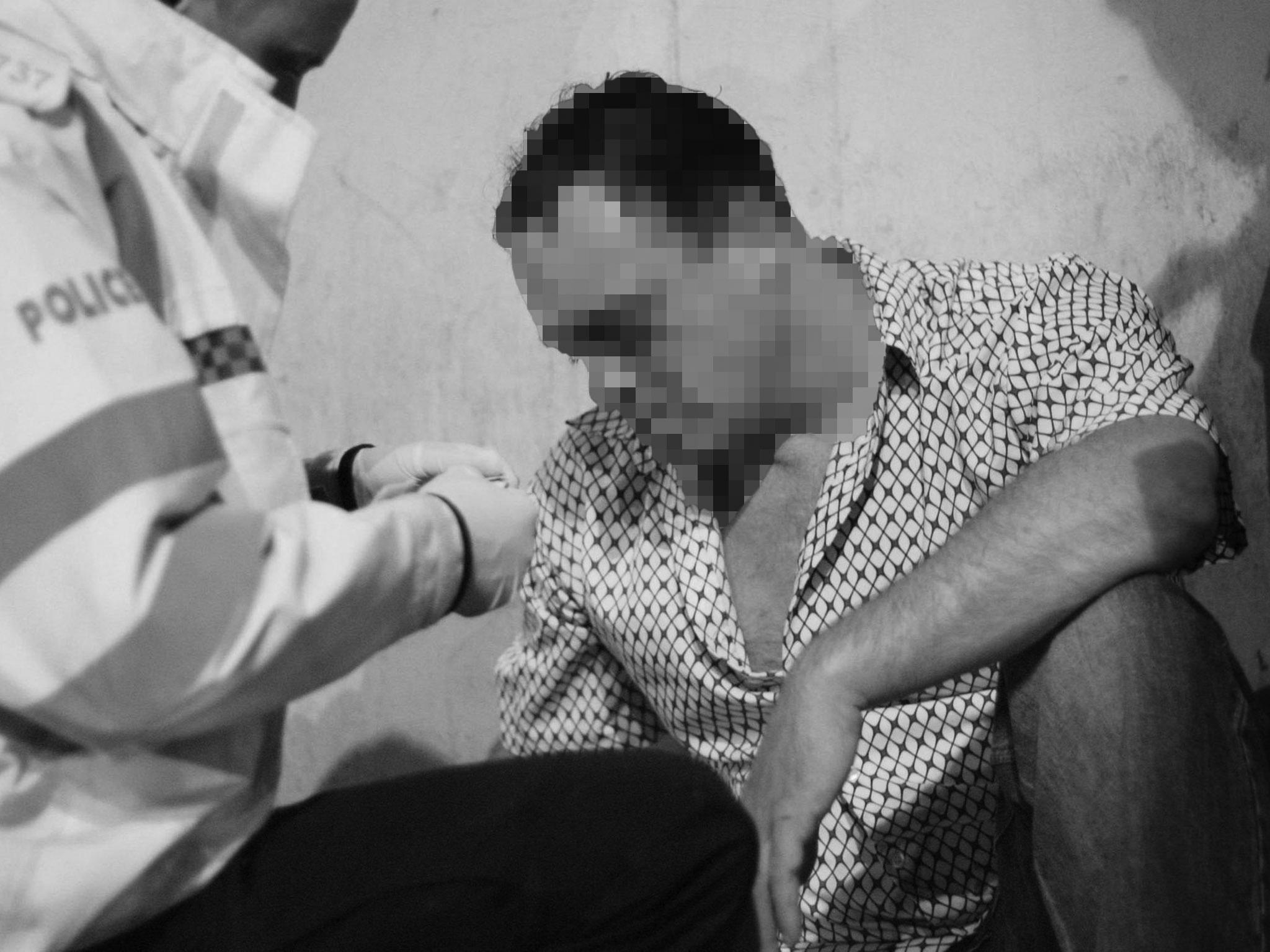
Your support helps us to tell the story
From reproductive rights to climate change to Big Tech, The Independent is on the ground when the story is developing. Whether it's investigating the financials of Elon Musk's pro-Trump PAC or producing our latest documentary, 'The A Word', which shines a light on the American women fighting for reproductive rights, we know how important it is to parse out the facts from the messaging.
At such a critical moment in US history, we need reporters on the ground. Your donation allows us to keep sending journalists to speak to both sides of the story.
The Independent is trusted by Americans across the entire political spectrum. And unlike many other quality news outlets, we choose not to lock Americans out of our reporting and analysis with paywalls. We believe quality journalism should be available to everyone, paid for by those who can afford it.
Your support makes all the difference.Raise a glass to... someone’s arm? Neck? Torso? Face? Raise it in any case: in anger. Spitefully. Jealously. Raise a glass to your brimming, bubbling, burning, resentment. Casting aside all motivation, provocation: use the lethal weapon nearest to hand; already in your hand.
Statistically, the most dangerous place to be is in or near a public house. Young and on licensed premises. Young and male and on licensed premises. On licensed premises from 9-30pm to 12-30am next day. Late on a Friday evening. Late on a Saturday evening.
And why raise a glass? Somebody has pushed his way to the bar in front of you. A lad has just winked at your girlfriend. His excuse: he sat next to her at primary school. Raise it after somebody has cheated on you. Or when a lass competes for your boyfriend’s affections. When somebody has insulted you; questioned your credentials. Or when yon geezer owes you money and appears singularly unwilling to pay you back.
It could be as simple a dispute over Arsenal losing, Chelsea winning. Up Man U, down Man City. Or, in the crush, a wobbly half of cider spills on your shirt. You’re not allowed to carry a dagger, but you are allowed to carry that glass or bottle. Indeed, you’d look odd without a glass in your hand.

Increasingly unhappy, you then have three options: bury that glass, or glass bottle, in your antagonist’s body, better still, his cheek – heedless as to whether it shatters or not. Or smash your glass against pillar or table, then use it as weapon of choice. Or chase your enemy or rival round the block, and throw a bottle in his direction – with potentially deadly accuracy.
Not infrequently, a dispute originates some way beyond pub or club – with the aggressor still clinging to his glass. Perhaps there is competition for bus or taxi, shelter from the rain, parking lots, freebies, whatever. Nottingham alone has 4,000 teenagers circulating between 200 licensed premises each weekend evening. Space, personal space, is always precious. Big man standing behind little man feels quite threatening – though not half as threatening as glass.
Although alcohol-related crime – a fifth of all reported crime – has dropped by a third in the past 20 years, glassing has risen by 10 per cent. Moreover, the crime of glassing is sometimes regional – Glasgow, Newcastle, Manchester, Liverpool known hotspots – and nearly always imitative.
Some researchers estimate up to 80,000 glassings a year – but this includes threats to glass a victim, or last-minute confiscation of the criminogenic implement. And hospital episode statistics point to assaults using sharp instrument – usually glass – causing 5,000 serious, life-changing, injuries each and every year. That means every single week: one hundred young adults totally unable to pick up the pieces of their shattered lives because a glass container, first reliably created in the 4th century AD, has shattered or been shattered.
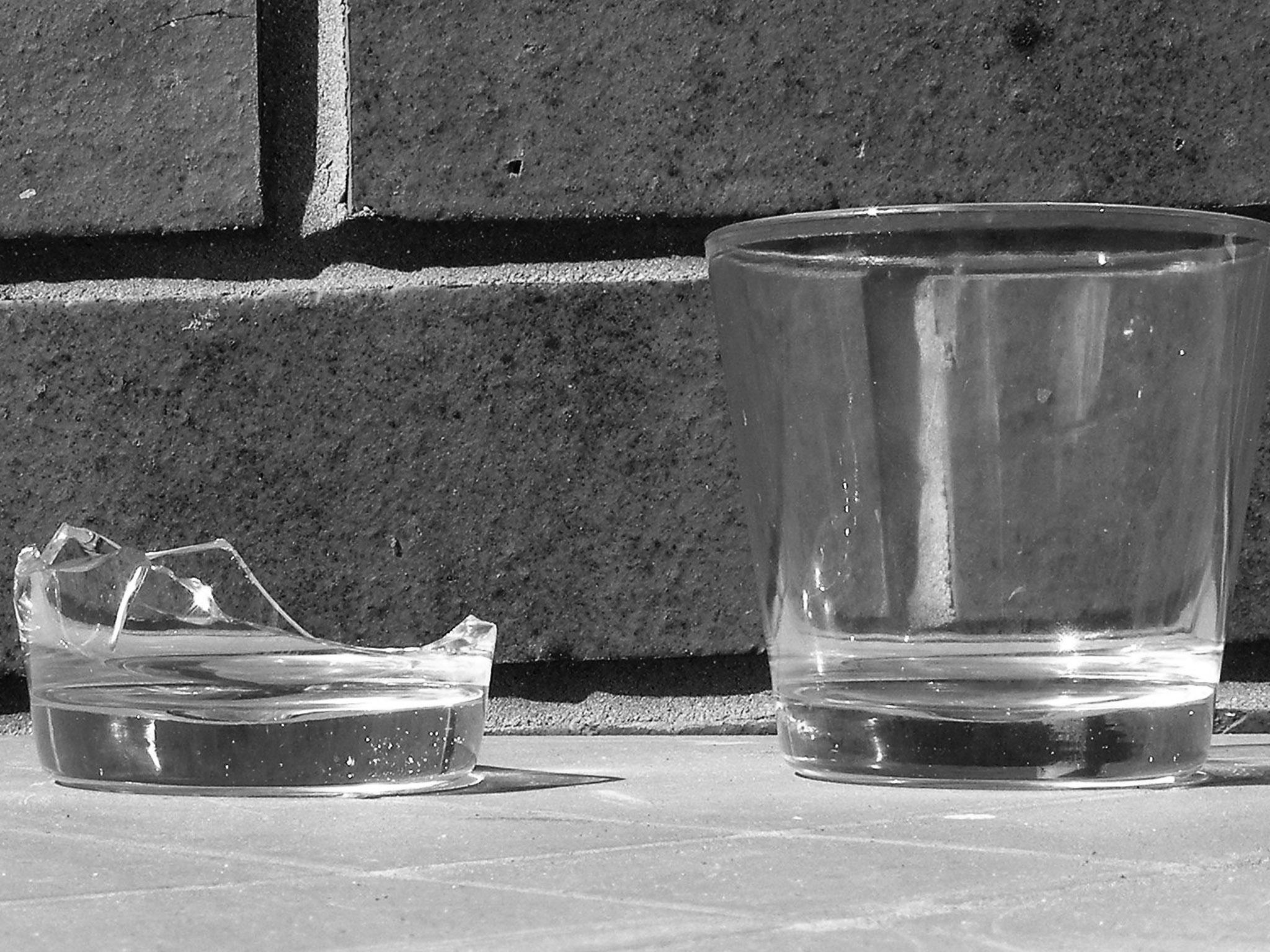
Indeed, most sheets of glass, most glass tumblers, most mass-produced bottles, are highly volatile when broken. The resulting shards and jagged edges cut into flesh, veins, arteries, ribs, soft tissue in a way very similar to a sharpened metal knife, yet different. Glass injury is far greater where dragging of the shard, worse, pressing of the shard, has taken place. And even supposedly “superficial” cuts require an age to heal: to say nothing of inherent infection, resultant infection, glass splinters remaining in the wound, scarring – and blood loss.
Then there are the eyes, the nearness of the eyes. A&E departments know all too well that a careless glassing – glassing by definition not careful – can end with glass in the eye, or both eyes, or just above, just below, an eye, further dampening hope of meaningful recovery or restoration of normality to the victim. The mouth is dreadfully near the location of glassing, as well.
Now bleeding. In the wake of glassing, can loss of blood be stemmed? Not without the intervention of a first-aid trained bystander who understands how to treat, bandage, bind or staunch a wound. Here, speed of response is crucial – not always found in a crowded bar late at night. Even if – even where – blood loss has been minimised, glass wounds are extremely frightening, extremely messy, extremely ugly.
Glass wounds, even pictures of glass wounds, are almost impossible to look at. Pity the rookie paramedic; the casualty nurse on only her third shift at A&E. Pity the bar staff – where an assault took place. Suddenly. Pity the party which only wanted to celebrate, and have a good time. Pity the victim’s parents, blissfully unaware beside their fireside; watching a talent-show on the telly; eagerly awaiting safe return of a son or daughter.
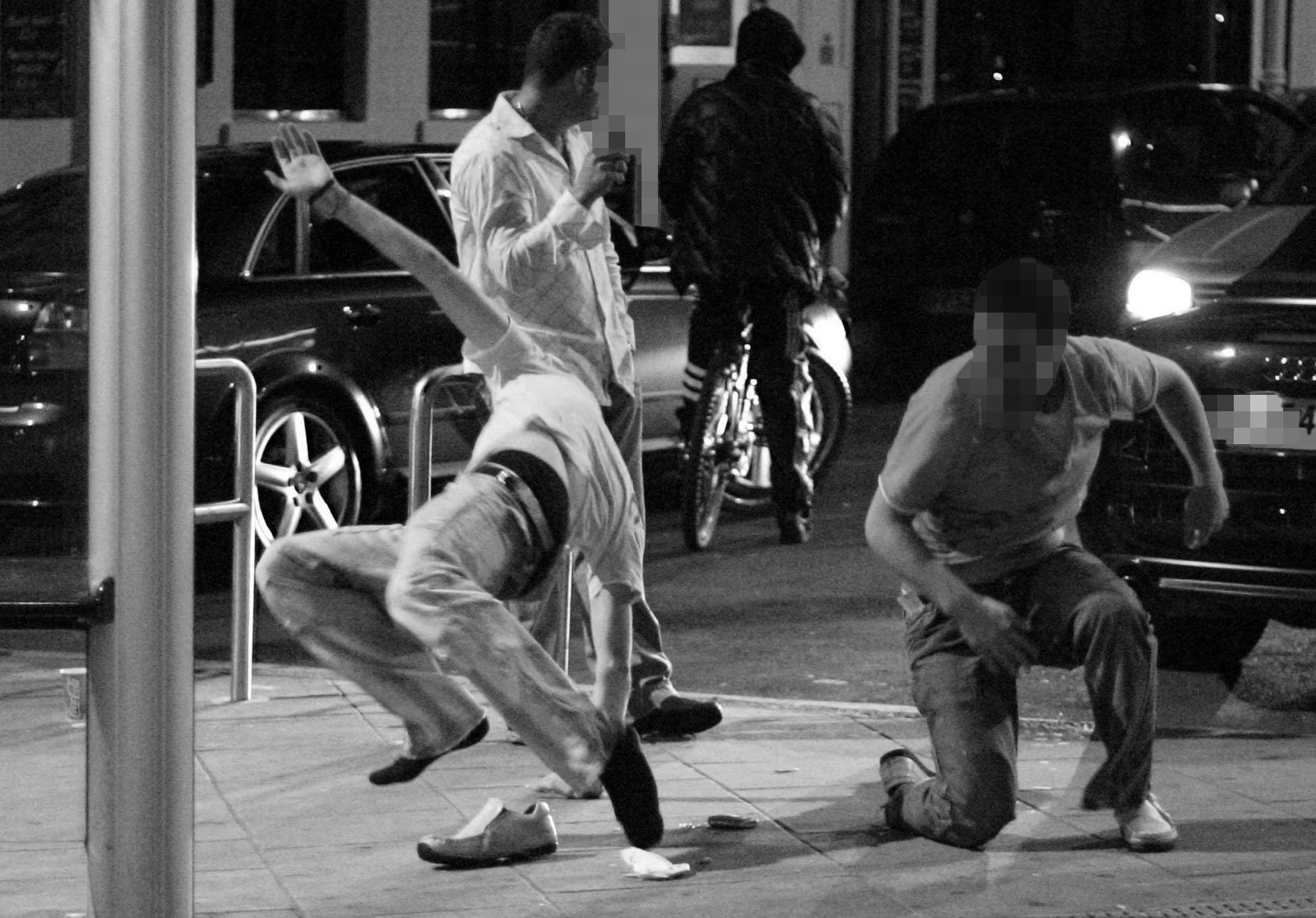
That scarring: was that intentional? Indeed it was – and is. In nearly all instances. And If not planned, or premeditated, the assailant was still reckless as to whether scarring would endure. Maybe the assailant reserved his girl to himself, unable to share her with any other lad. Or else a girl well-versed in just how long make-up takes; how intricate the process of preening; how important self-presentation for the outside world, aimed for the other girl never to feel confident – or pretty – again. Or a man, 23, a paramilitary, ensured a 22-year old co-religionist, a 20-year old big-mouth, a 25-year old unionist, each, was branded for life, in a manner far more effective than bite, tattoo, scalp or tar-and-feather: physical scarring of cheek or forehead, mental scarring within.
Onlookers are baffled. First-response medics are baffled. Surgeons too are baffled: the limits of plastic surgery reached all too quickly. It is estimated glassing costs the NHS an extra £3bn a year – worth highlighting on the balance sheet. While still excluding glassing’s inevitable psychological harm; post-traumatic stress; prolonged sick leave; years of agoraphobia; estrangement, separation, divorce. These truly unquantifiable.
The Criminal Injuries’ Compensation Board does have to attempt placing a figure on loss. One compensation lawyer relates how four or five cases of glassing cross her desk every week. And where her fee exceeds the likely “reward,” she advises clients to approach the board direct.
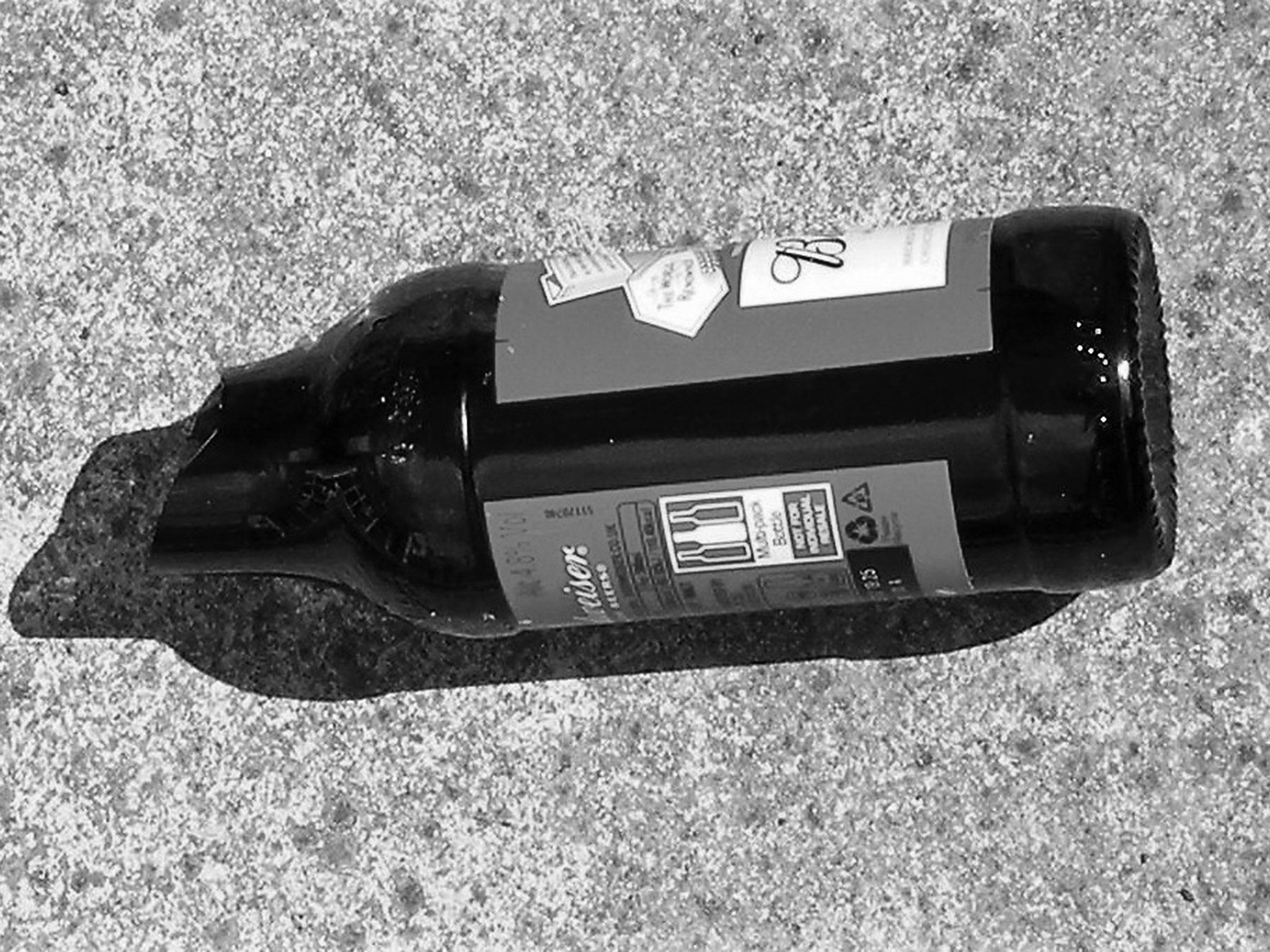
Equally, the Criminal Law has to respond to glassing. Of interest: the Justice Department’s sentencing guidelines for magistrates, judges too, address glassing by name:
1. The offence of grievous bodily harm (GBH) with intent :
A Sn.18 GBH is committed where an offender causes the victim really serious physical or psychological harm and intends to do so. For example, picking up a glass bottle, breaking off the neck and stabbing the victim with the broken bottle causing serious wounding or disfigurement: between three and 16 years custody, with a maximum of life imprisonment for the most serious cases.
2. Unlawful wounding/grievous bodily harm:
A Sn.20 GBH is committed when an offender causes really serious physical or psychological harm either intending to cause some degree of harm or being reckless as to whether such harm was caused. It is used for the same level of injury as a s18 GBH but lacks the necessary intent to cause that harm. For example, striking someone while having a glass in your hand that in the heat of the attack you had forgotten you were holding but on impact with the victim it broke causing serious wounding to the victim: a sentencing range of community order to four-year custodial sentence. For the most serious cases of “simple” Sn.20 wounding, a maximum sentence of five years is available; seven if the offence is racially or religiously aggravated.
3. Assault occasioning actual bodily harm (ABH):
An offender commits ABH when s/he either intentionally or recklessly causes physical or psychological harm which is less than really serious but more than transient or merely trifling: eg. a cut requiring stitching or psychological disturbance which is more than fear, distress or panic: a financial penalty rising to a three-year custodial sentence; maximum five to seven years in extreme circumstances.
Away from criminal and civil law, laying aside punishment and its supposed “deterrent” effect, are there any measures licensees can introduce to reduce glassing – or quarrels that might result in glassing? An orderly house – with fully-functioning CCTV – is an obvious good beginning. The manager, and/or the designated premise supervisor ( under the Licensing Act of 2003) needs to be eternally vigilant; prepared to turn away drunkards; wise in accepting or rejecting certain categories of customer; diligent in training bar staff in good customer relations; confident using Pubwatch, DrinkAware, Street Angels, community police, whenever appropriate.
Door Staff – colloquially still called bouncers – also need to be superbly trained, sensitively paired up and deployed. Door staff must be more proficient at de-escalation, diversion and humour than crisis intervention or amplification. Many soor staff already hold security industry certification.
Then, once glass has been accepted as a “criminogenic material”, alternatives to fragile glass need promotion. Such a vexed question: toughened glass? tempered glass? shatterproof glass? plastic glass? Purists say only “real” glass will do. Real glass is shipped from most bottlers and pub suppliers. So the customer must be changed, not the glass. Otherwise, the Government would ban knives, forks, plates, chairs and other pub implements causing injury.
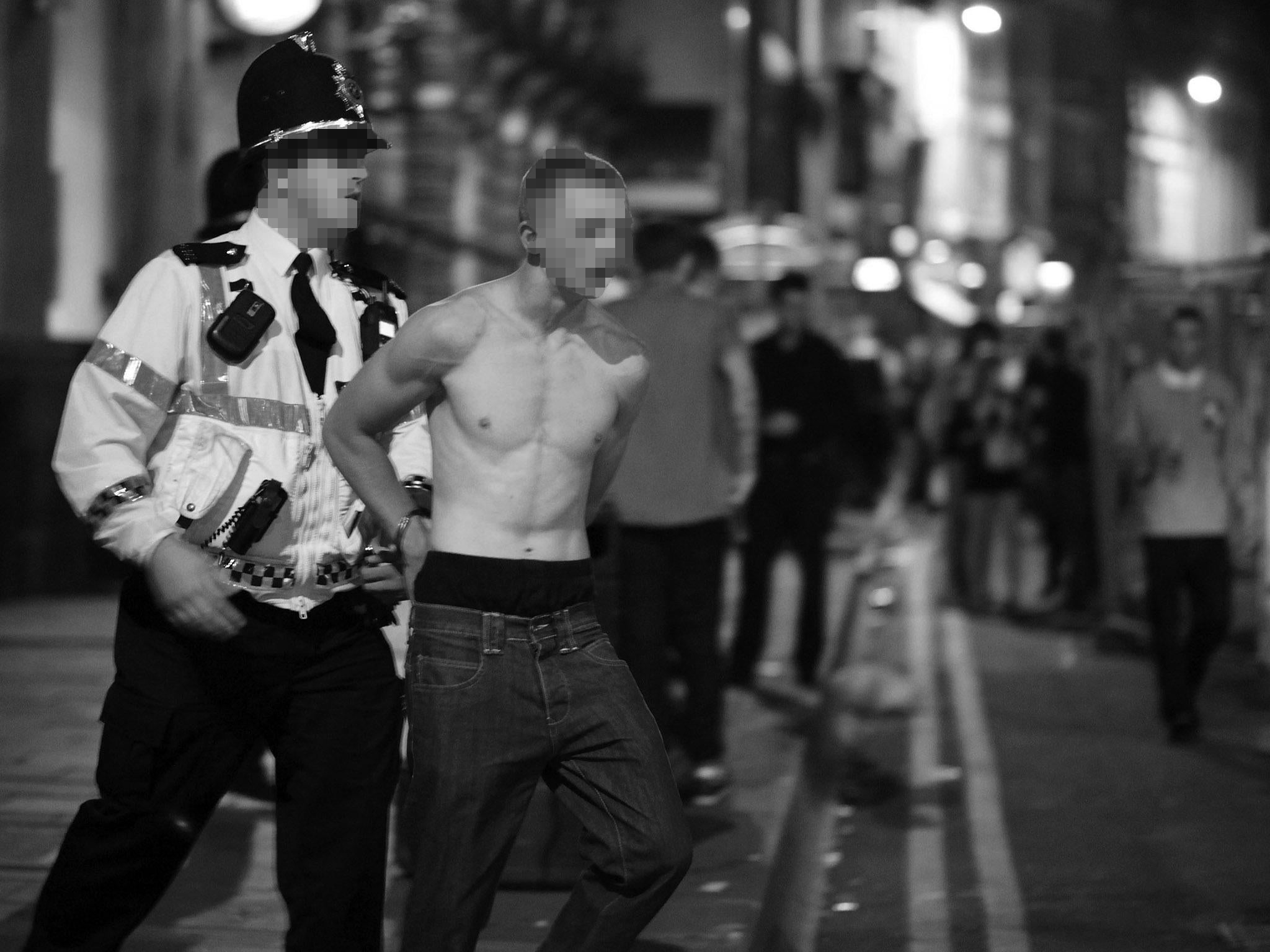
All arguments which don’t wash with doctors and nurses. They say two layers of glass bound together by resin are far more difficult to smash; and if less breakable glass does break, injury is averted by a consequent pile of useless oval pellets. Additionally, they point to cinemas, matches and county shows where plastic glass is already compulsory. Moreover, some bottles can be cylindrically shaped with no neck; other bottles can be made of aluminium.
The Home Office recently gave a grant of £175,000 for research into glass innovation: glass four or five times less given to implosion. Definitely a small investment with big return. After all, a safer, more pleasurable drinking environment for the eight out of 10 young adults who choose alcohol is their goal, everyone’s goal.
Not yielding to moral panic, glassing is surely a crime as hideous as it is heinous; a crime so easy to commit, so difficult to forgive, so impossible to repair.
Join our commenting forum
Join thought-provoking conversations, follow other Independent readers and see their replies
Comments